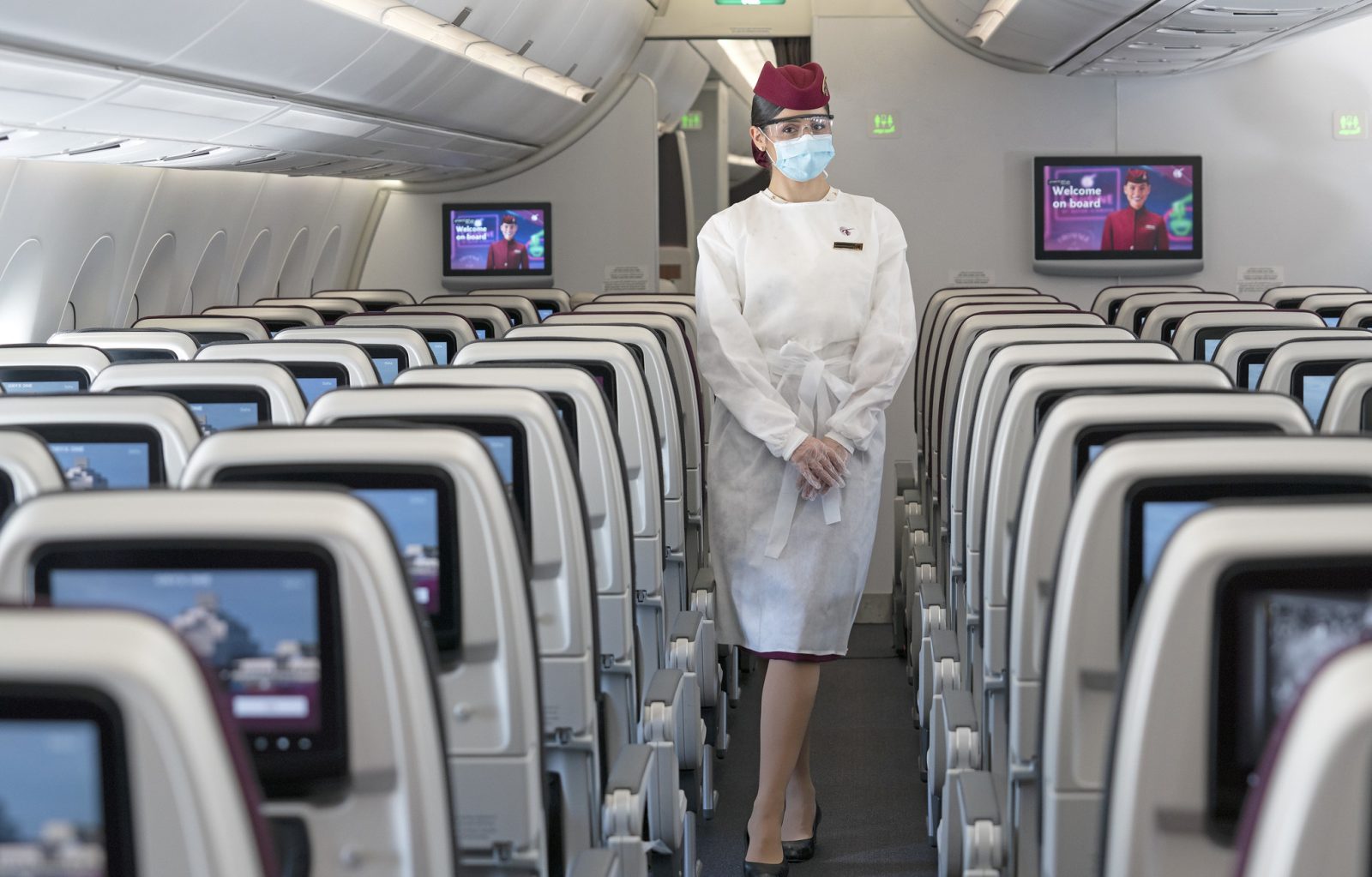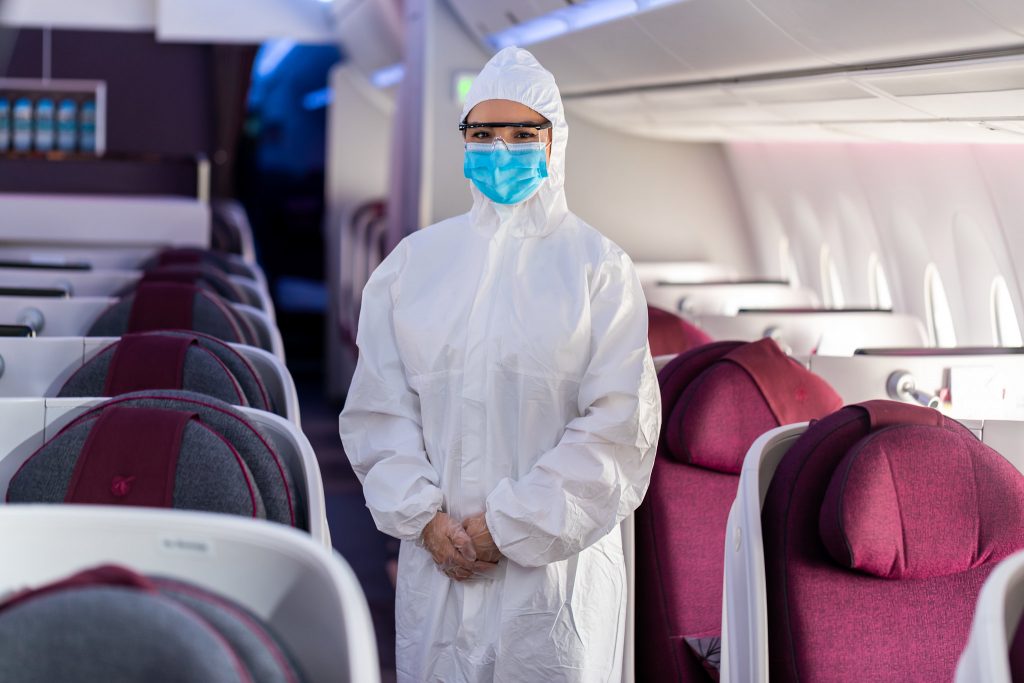
Doha-based Qatar Airways has claimed that only 0.002 per cent of operating cabin crew have been affected by the virus that causes COVID-19 onboard one of its flights since the start of the global pandemic. The airline did not, however, clarify whether a significantly higher number of cabin crew had tested positive for the novel Coronavirus but in circumstances that could not be directly linked to working on a flight.
Since the government-run airline introduced full personal protective equipment for cabin crew in May, however, Qatar Airways says not a single new case amongst its operating cabin crew has been recorded. As well as requiring face masks, gloves and goggles, cabin crew were also made to wear disposable paper hazmat suits before transitioning to paper gowns.

Akbar Al Baker, the airline’s chief executive used the data to further support a growing campaign from across the aviation industry that flying is safe and the chance of being infected onboard a plane is “almost non-existent“.
“We are able to report that 99.988 per cent of the more than 4.6 million passenger flown sectors operated have been COVID-19-free onboard our aircraft since February 2020,” Al Baker commented on Monday.
“In addition, significantly less than one per cent of Qatar Airways’ more than 37,000 flights have been confirmed to have carried an infected passenger,” he continued.
The data release from Qatar Airways comes just over a week after the International Air Transport Association (IATA) claimed the risk of being infected with COVID-19 on a flight was the same as being struck by lightning.
The trade body that represents 290 airlines around the world backed up its claims with research that shows out of a total of 1.2 billion passengers that have so far travelled this year, only 44 cases of onboard transmission have been reported.
Dr David Freedman, an infectious diseases specialist whose research underpinned IATA’s presentation, however, has distanced himself from the claims saying it was based on “bad math”.
“1.2 billion passengers during 2020 is not a fair denominator because hardly anybody was tested. How do you know how many people really got infected? The absence of evidence is not evidence of absence,” Dr Freedman told Reuters.
Airlines have been encouraged in recent days by separate research from the U.S. Department of Defense conducted in partnership with United that concluded the chance of COVID-19 particles coming into the breathing zone of another passenger was just 0.003 per cent – so long as everyone wears a face mask.
Qatar Airways has taken extreme and sometimes controversial measures to protect its cabin crew from the threat of COVID-19. Al Baker admitted that the hazmat suits were uncomfortable, while the airline imposed a temporary 9 pm to 7 am curfew on cabin crew in August despite the small Persian Gulf country easing Coronavirus related restrictions.
The airline has also come under fire for asking married cabin crew to move back into company-provided accommodation if they wanted to continue working. By moving into dedicated cabin crew accommodation, they were expected to live apart from their partners.
The low prevalence of transmission amongst cabin crew has been echoed at a number of other airlines. American Airlines, Delta and United all report the rate of infection amongst its flight attendant workgroups as significantly below the U.S. national average.
And in July, Cathay Pacific reported that out of a total of 3,200 COVID-19 tests conducted on pilots and cabin crew, not a single one had come back positive.
Mateusz Maszczynski honed his skills as an international flight attendant at the most prominent airline in the Middle East and has been flying ever since... most recently for a well known European airline. Matt is passionate about the aviation industry and has become an expert in passenger experience and human-centric stories. Always keeping an ear close to the ground, Matt's industry insights, analysis and news coverage is frequently relied upon by some of the biggest names in journalism.







